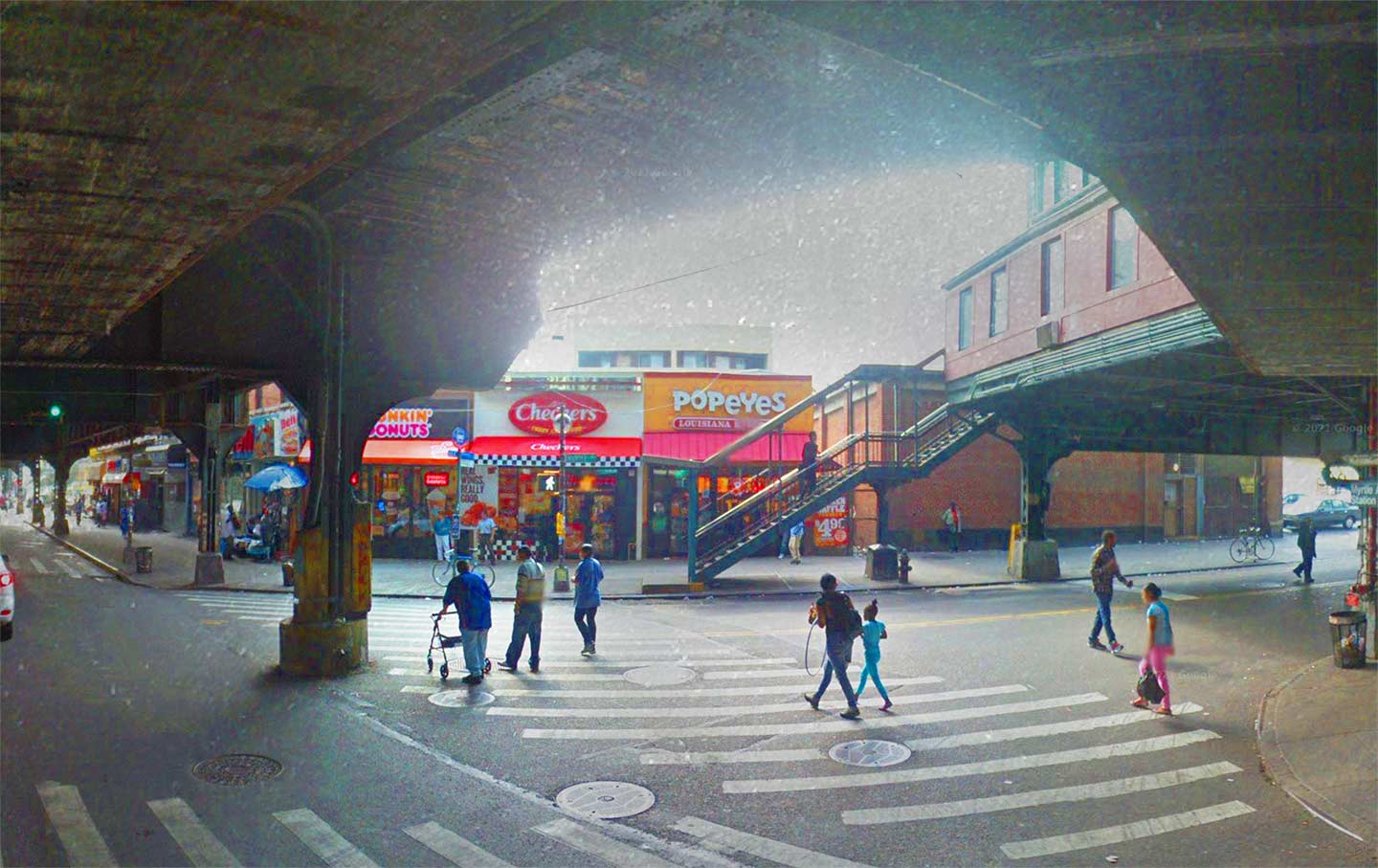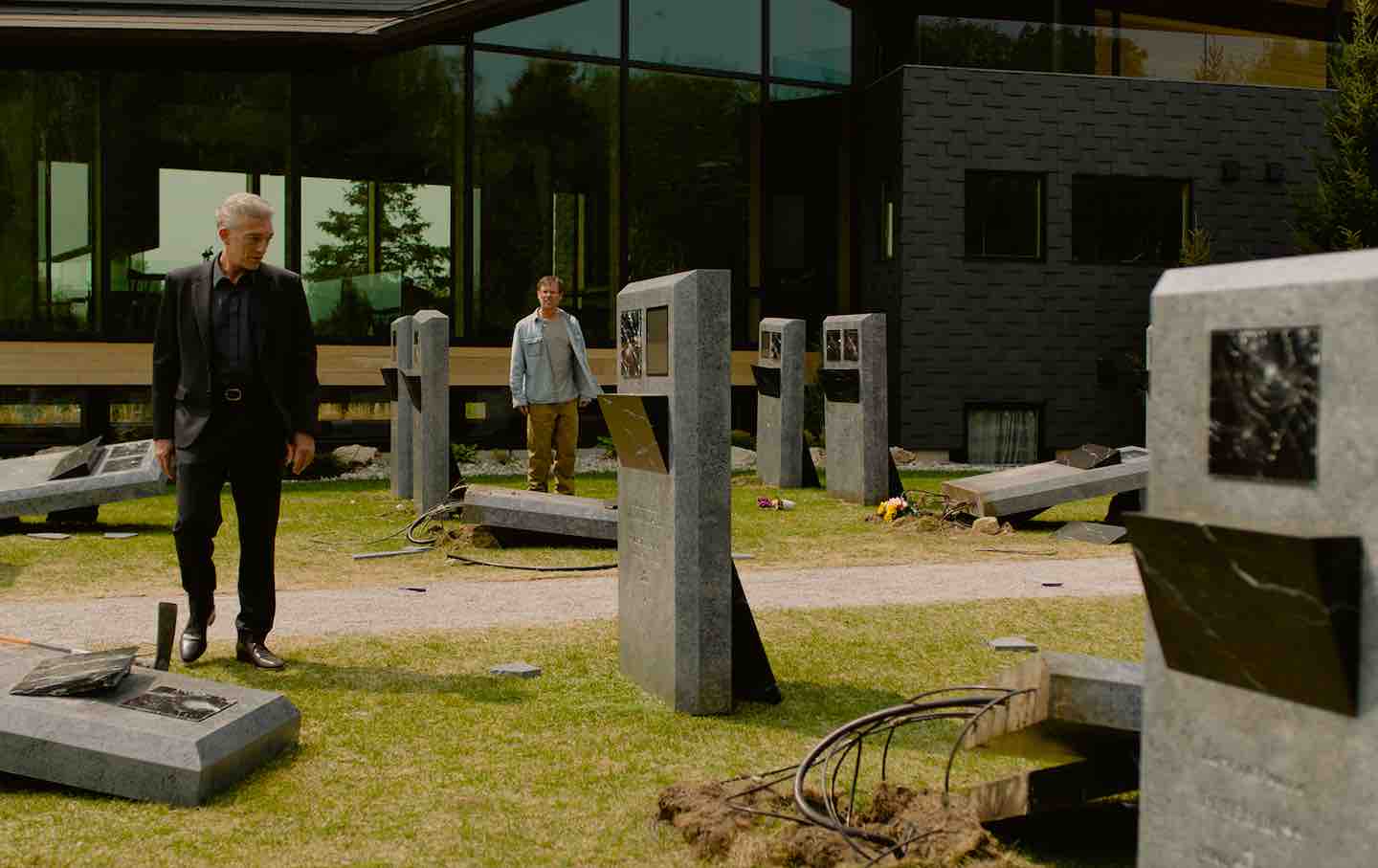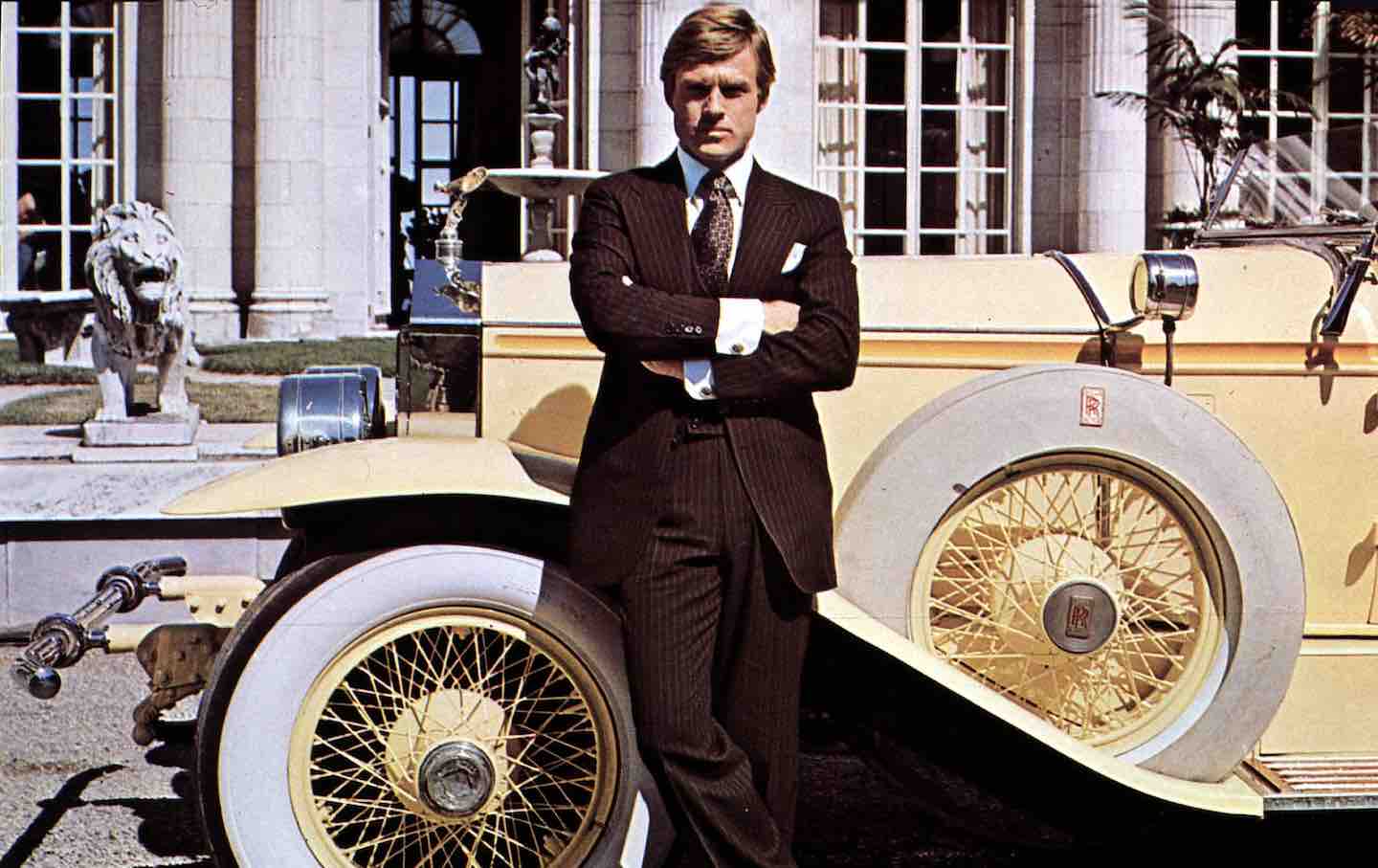That Collective Feeling
The rise and fall of New York clubbing.
The Rise and Fall of New York Clubbing
Emily Witt’s memoir of Brooklyn’s rave scene accomplishes something that even the cynical among us cannot deny: It will make you want to go dancing.

In the mid-2010s, young Brooklynites well acquainted with the borough’s nightlife shared a psychogeography that was rooted around the Myrtle-Broadway subway stop. Upon exiting, you were greeted by the sight that began and ended your night—a trio of fast-food restaurants burned into the minds of all the dissolute people of my generation: a Popeyes, a Checkers, and a Dunkin Donuts. From there, you fanned out into a network of clubs, bars, and underground parties that surrounded the elevated subway tracks.
Books in review
Health and Safety: A Breakdown
Buy this bookThere was something for everyone: For indie rock, you could go to Silent Barn, a DIY space and co-op; for the more spiritually inclined, there was the Body Actualized Center, where you could sway and meditate in a cloud of Palo Santo smoke; and for those who wanted to dance and DJ and drink imported German energy drinks into the wee hours, there was Bossa Nova Civic Club. I found myself at many of these spaces in my early 20s, but the one I was most loyal to was the electronic music scene that orbited Bossa Nova and a number of illegal, ad hoc raves that took place in warehouses and basements all around this part of Northern Brooklyn.
In 2016, The New Yorker’s cover one April week was a cartoon illustration of a concert at Palisades, a venue in Bushwick that was a neutral space for all these scenes, where devotees of rock, techno, noise, and rap would all congregate. It was, like most of the clubs in Bushwick, a carefree place where you smoked cigarettes inside and drank bottom-shelf liquor, knowing full well that you were in flagrant violation of the city’s codes for health and safety.
A 2017 campaign to repeal the Cabaret Law, which made dancing illegal in unsanctioned venues, led to a great expansion of these spaces in North Brooklyn: There was Nowadays, a giant indoor-outdoor venue built on a Superfund site on the border of Ridgewood and Bushwick; an astrology-themed cocktail bar called Mood Ring; and Elsewhere, Bushwick’s first mega-club. None of these places could stay open all night, so there were options for people who wanted to keep on going. You might fortify yourself with a slice of pizza at OMG and find yourself at an after-hours rave like UNTER.
UNTER, which started in 2015 as a sort of after-hours for when all the other Brooklyn clubs had closed, was the party du jour among the borough’s ravers at the time, a confluence of everything that was happening in the local nightlife scene: queer, illegal, loud, and occasionally transcendent. It was there that the parties most closely resembled the Berlin raves that seemed otherwise impossible to have in New York. UNTER hosted raves that lasted all weekend, often in some monumental venue (most memorably, a Greenpoint warehouse that overlooked the East River) that was hard to believe could exist in a city where space was so limited. I went to as many UNTERs as I could the year I graduated from college; it was the thing you did if you really, really loved electronic music, as I did (and still do). But it was also the place where I started to doubt whether I was cut out for the lifestyle.
One night in December 2016, as an edition of UNTER was getting started, a fire broke out in a club on the other side of the country, at an Oakland venue called the Ghost Ship. The cause of the fire remains unknown—some blamed a faulty fridge or a similar failure tied to the building’s electrical wiring—but the warehouse space was especially susceptible to the tragedy that soon took place: There were no smoke alarms or sprinklers installed, and the makeshift wooden stairs and other highly flammable items in the building only accelerated the fire’s spread and made it nearly impossible to escape. Thirty-six people died. Some of them were friends or friends of friends—people we had danced or DJ’d or shared drinks with.
I can’t really remember how the rest of the night at UNTER went after I heard the news; I can only recall the sinking feeling I had when I saw someone I knew crying into their phone. I kept going out for the next few years, but I think my desire to lose myself on the dance floor waned slightly after that night. It was hard for me, at least for a while, to loosen up if I was contemplating the fragility of it all, the random danger of everyday existence.
Emily Witt was in Berlin when she heard about the fire. She was a fellow “head”—a devotee of dance music—and a denizen of the same Brooklyn scene. She was in Berlin ostensibly to work on a book, but like many people who find themselves in the German capital, she was also there to do drugs and go out. But that night she, too, questioned whether the party could go on. As she recalls in her new book, Health and Safety: A Breakdown, the Ghost Ship fire was an event that made the stakes of clubbing all the more real for anyone involved: “The truth was that even those of us without a strong instinct for self-preservation had been scared by what happened.”
It is hard to achieve catharsis at the club if there’s a lingering sense of fear in the back of your head: Letting go of inhibitions in order to dance in public is all about clearing the mind of unwanted thoughts. You don’t go out dancing to think. I was looking for something else, and so was Witt. Enjoying loud music in a dark room with friends and strangers was about connection. In its ideal form, nightlife, clubbing, is about care: a set of stated and unstated hopes and aspirations about community and community-making. With the news of the Ghost Ship fire, all of this appeared to be at risk.
To put into words a world of mostly wordless interactions is the challenge that Witt takes up in Health and Safety. She attempts to capture, through memoir, sociology, and a kind of club ethnography, the many meanings and embodied states of a night out, while also situating them in an evolving subculture. As Witt puts it, the soundtrack that defines a night out, the DJ’s set, is far more than just a selection of music. Each set pursues “a different order of sense-making.” If the very point of dancing is to obliterate your sense of self, even for a second, and lock into the “communal current” of a crowd of bodies, then the task of Witt’s book is to put this gooey abstraction into literal-minded journalism. Health and Safety poses a risky proposition: What is the cost—intellectually, socially—of infecting that which gives you fulfillment outside your labor with that most insidious of things, journalism?
Emily Witt is a staff writer at The New Yorker whose ambit is more capacious and varied than that of the average magazine journalist. She covers the so-called serious topics of the day, like gun control, national politics, mass protest movements, and the environment, but she’s also a nimble cultural journalist and critic. Her first book, Future Sex, was a New Journalism–inspired exploration of millennial sex, dating, and social mores, and her second, Nollywood: The Making of a Film Empire, looked at the booming movie business in Nigeria.
But while Witt was busy toiling away as a journalist, she also decided in her 30s that she had missed out on the kinds of things young people do before they’re supposed to conform and have a career: drugs, dancing, and staying up all night with the intention of seeing the first inklings of dawn. After she moved back to New York to finish Future Sex in the early 2010s, Witt set out to become a different person, or two different people: a serious journalist when the sun was up, and a clubber and casual drug user after the sun set. In the years she catalogs in Health and Safety—her decade of dancing—these two worlds struggle to exist in parallel, and the book is a product of her hope that this split could be reconciled.
Making clubbing the subject of literary journalism is no easy task: It can be fraught and self-indulgent, a cool-kid version of the journalist who writes a memoir about an erstwhile hobby, be it biking or fly fishing. It’s also hard to write about electronic music in a way that might appeal to those outside its circle of adherents. As Witt discovered when she tried to introduce her writerly friends to her new obsession, “they did not see the freedom” she saw in this “music with few lyrics”; to these literary types, it was cold and repetitive. What these friends could not see, and what Witt wants to show us, is that electronic music is not just emotionally and aesthetically interesting; it is organized around communal activity, one that had no analogue in her other life as a literary person. For Witt, clubbing, raving, and dancing were all forms of communion, a way of not just finding herself but finding others. There might be an infinite combination of pleasurable sounds that one can create on a computer, but what Witt is interested in is the infinite combination of feelings one can have on the dance floor: the ways the club is meant to model an almost shared subjectivity, in which a good time is not just felt on the personal level but pulses through the crowd itself.
Before Witt discovered the club, she tells us early in Health and Safety, she’d discovered psychedelics. A bookish and professional overachiever, she started with the “middle-class entry points”: She smoked DMT six months after quitting antidepressants, drank ayahuasca at a ceremony in upstate New York, ate peyote buttons by a campfire. She also had that familiar “unfortunate intellectual detour” of immersing oneself in the “canon” of drug literature (The Electric Kool-Aid Acid Test, The Doors of Perception, and the like) and even momentarily entertained the idea of adding to this canon herself by writing a book about drugs, alternative medicinal practices, and “self-help.” But drugs alone lacked what Witt was looking for in the 2010s: She wanted to escape the atomizing feeling of individual achievement and to find a place where no one really cared about your day job.
All of this yearning was connected to a simmering dissatisfaction with her chosen line of work. Journalism could provide its own stimulation and validation, but the social life around publishing and magazines was gloomy, boring, and backward-looking. The writers and editors she knew all lived in brownstone Brooklyn (i.e., Park Slope and its surrounding neighborhoods) in a “state of lamentation”: They were nostalgic for “a world where books or magazines held widespread attention.” Merciless in her distaste for a world she still thrives in, Witt is particularly biting when talking about her contemporaries:
The writers asked themselves: What was of the now? Their output illustrated the uncertainty. Was Beyoncé the thing? Or was it “the golden age of television”? Was it the decision to have children in the age of climate change? Was it a true-crime podcast? Was it the alienation of contemporary exercise regimes? Was it articulating generally observable social media trends?… The writing was laden with hyperbole and false epiphany. It anxiously attempted to convince the reader of the importance of unimportant things—of the genius of our mediocre pop stars, of the revolutionary nature of token political symbols. Very little that was written pierced the ersatz nature of the world around us.
Psychedelics provided a temporary way to pierce all this unreality, but it was once she’d left brownstone Brooklyn and moved into an apartment near Myrtle-Broadway that she embraced clubbing as the outlet she was looking for. Witt knew throughout all this that she was migrating from one cliché to another. She was no longer a person who drank cheap wine at readings after work and instead was the one who did cocaine in club bathrooms, but she was still part of a process of remaking the borough, and in particular her neighborhood, for better or worse.
Before Bushwick became ground zero for New York’s clubbing renaissance, it was better known as a working-class, predominantly Latino neighborhood. It still is, but the rush of development that occurred in the 2010s pushed rents up, displaced longtime residents, and transformed the neighborhood into something else as well: a place for almost cartoonish millennial gentrification—for “childless adults who had artistic pursuits, worked on their laptops at [coffee shops]…dressed in used clothes, commuted by bicycle, cut their own hair, volunteered at the Bushwick Food Co-op or one of several community gardens, attended…shows at Silent Barn or Market Hotel.”
Popular
“swipe left below to view more authors”Swipe →To be a part of this class amounted to more than just a stereotype; it was a psychic condition—a simmering, ambient guilt for the material effects of your lifestyle choices. The hedonism you pursued after work was undergirded by the incontrovertible reality that the neighborhood was being remade in your “image” at the expense of longtime residents. Witt wrestles with these contradictions, acknowledging the inequality that even well-meaning transplants to Bushwick helped engender, but she approaches it from a stance that is, curiously, at once detached and self-implicating, withering and sensitive. What she ends up illustrating is how the conditions of Bushwick produced a different type of millennial, leading the same double life that Witt pursued, where the daytime activities of liberal striving had become empty of their meaning. In this mode, Health and Safety is not just a memoir of clubbing, but a critical and cultural history of a time and place worthy of its own periodization. The book attempts to understand how, in such a short period of time (less than a decade), Bushwick became so many new things—a meme, a global tourist destination, and a metonym for going out.
When it came to clubbing, Witt had a guide in the form of a new boyfriend, Andrew. Her relationship with him provides much of the book’s dramatic arc; their ups and downs are a way for her to reckon with what it means to trade the years in which most adults settle down for a life of late nights. Witt’s book shines in telling the story of her clubbing. Her passages are novel-like in their descriptions, offering a heightened, high-modernist style of music writing developed through her immersion. She writes artfully and precisely about the granularity of sound and the texture of a night out, attuned to clubbing’s historical genealogy and its immediate, spontaneous effect.
Many have tried to capture what electronic music—specifically techno, in all its pointillism and angular beauty—can give a potential listener, and Witt’s particular rendering of the genre’s richness and weirdness gave me a newfound appreciation for what it was capable of:
The music did not say what to feel or when to feel it. Instead it followed a process of defamiliarization and destabilization. To make a literary comparison, it had the discontinuity of poetry instead of the continuity of a story or a novel…. Just as a difficult poem could generate narrative through meter and rhyme even if its words avoided anything as obvious as a grammatical sentence, so it was too with the nanotechnological electronic sounds that [a DJ] mixed, switching records in and out in a rapid blur of movement…. What techno offered was not meaning but space, and the possibility of evoking the complexity of the world through discontinuities and breaks, interruption and hybridization.
Where lyrical music, driven by traditional instrumentation, seeks to generate a more linear range of feelings (elation, pathos, recognition), a DJ working through the journey of a set can help unlock a flow state in the listener, a feeling that is embodied as much as it is cerebral, where the relentless, unceasing waves of sound can disorient and reorient you constantly, all in the service of melting you and the crowd into one entity.
This might sound utopian or far-fetched, but Witt’s descriptions are compelling. Her enthusiasm for capturing the experience is also grounded in her sociological and historical observations on dance music’s persistent but marginalized place in American cultural life. The people of today’s club scene have brought an entire history to bear on it, one inspired by 1970s New York discotheques, the creation of techno and house in the post-industrial landscapes of Detroit and Chicago, this music’s migration to Europe in the 1990s and 2000s in the shadow of a fallen Berlin Wall, and the creation of an international clubbing class. What persisted through all these decades was a sense that clubbing contained liberatory potential: It helped create a space where bodies of all types and a wide array of classes and sexual identities could pursue a shared end. Here in New York, what Witt saw forming was heartening: So much had to be overcome—laws that had to be broken or repealed, space that needed to be found—to create a subculture that was this capacious and inclusive.
The trouble with a work like Health and Safety is that it is fighting on two fronts at once: It has to convince a bookish, intellectual crowd that clubbing is a serious activity worthy of contemplation, and it has to convince the members of the subculture it is documenting that it is not merely an exercise in parasitic, participatory journalism. This is, perhaps, the ultimate conflict at the heart of the journalism Witt practices, a broad tradition that began with the New Journalists of the 1960s and ’70s. Witt is well aware of these conflicts and how New Journalists have often clotted their own writing with bromides and prejudices. But just as with her willingness to test her own limits through drugs and clubbing, so, too, with journalism: Witt is not afraid to take up this tired form and see if it might be a useful literary tool in her quest to understand herself anew.
At times, Health and Safety does test the limits of a reader’s tolerance when it comes to how narrowly focused it can be on Witt’s point of view, her feelings on everything from what constitutes a good party to the value of protest to the salience of political journalism to what is expected socially of an adult woman approaching 40. The last phase of the book, which concerns the Covid lockdowns, the George Floyd protests, and the story of her harrowing breakup with Andrew, take us to the very limits of her subject position (a white woman from the Midwest with a job in prestige media). And yet even the most personal passages here can end up being the most arresting, because they are so earnest in their efforts to confront these limits and wrestle with the conundrums of being a writer: How do you collect the disparate strands of yourself to understand a moment so much larger than yourself? How can you write about a historical epoch from the limited vantage point of one?
The risk of this approach is that by highlighting and even confronting its own limits, it also courts disaster and derision. But in the end, it is perhaps the most honest way to write a book like this—a daring act of cultural journalism, one that hopes to accomplish something so improbable that even the cynical and cautious among us cannot deny it: It made me, and it will make you, want to go out dancing.
This more joyous task is only complemented by Witt’s intellectually curious, self-conscious consideration of a New York subculture—one that defined for so many the very idea of fun and community in this city. And this subculture is presently on the verge of disappearing as the city again remakes itself in the face of new money and new pressures.
When you exit the Myrtle-Broadway subway stop these days, you’re still greeted by that fateful trio—the Popeyes, the Dunkin, the Checkers—but as you wander Bushwick’s streets, you’ll notice another reinvention taking place: Where clubs once thrived, you’ll now find New American restaurants or for-sale signs. The new condo buildings that have sprouted like mushrooms are half-empty, waiting to be occupied by those who never knew or cared about what came before them. One might find this disheartening, but on this, too, Witt remains optimistic—because dancing persists, especially outside of Brooklyn. At the end of Health and Safety, Witt goes to Detroit for the Movement Festival, a weekend that celebrates the city’s role in the creation of techno. There, in the city’s abandoned factories and outdoor raves, she finds thriving what has always drawn her to the dance floor: the feeling of your body in a space with others, conscious of what’s around you and what made you—the chance to partake in a “collective ideal,” a “collective feeling.”
Hold the powerful to account by supporting The Nation
The chaos and cruelty of the Trump administration reaches new lows each week.
Trump’s catastrophic “Liberation Day” has wreaked havoc on the world economy and set up yet another constitutional crisis at home. Plainclothes officers continue to abduct university students off the streets. So-called “enemy aliens” are flown abroad to a mega prison against the orders of the courts. And Signalgate promises to be the first of many incompetence scandals that expose the brutal violence at the core of the American empire.
At a time when elite universities, powerful law firms, and influential media outlets are capitulating to Trump’s intimidation, The Nation is more determined than ever before to hold the powerful to account.
In just the last month, we’ve published reporting on how Trump outsources his mass deportation agenda to other countries, exposed the administration’s appeal to obscure laws to carry out its repressive agenda, and amplified the voices of brave student activists targeted by universities.
We also continue to tell the stories of those who fight back against Trump and Musk, whether on the streets in growing protest movements, in town halls across the country, or in critical state elections—like Wisconsin’s recent state Supreme Court race—that provide a model for resisting Trumpism and prove that Musk can’t buy our democracy.
This is the journalism that matters in 2025. But we can’t do this without you. As a reader-supported publication, we rely on the support of generous donors. Please, help make our essential independent journalism possible with a donation today.
In solidarity,
The Editors
The Nation








